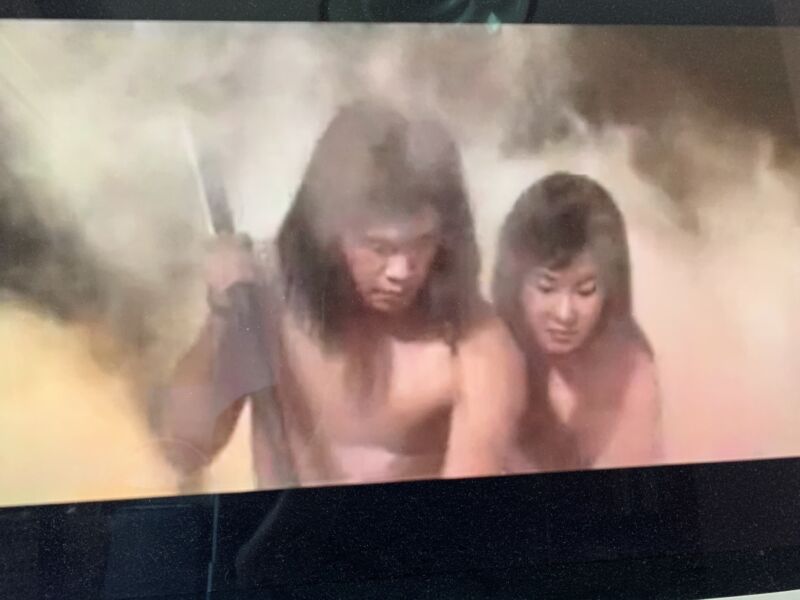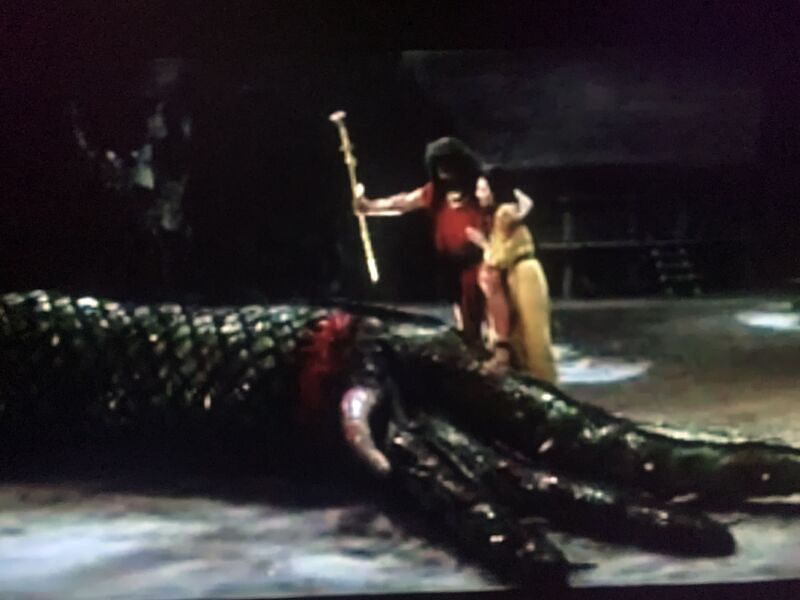
Thanks to Green Shinto reader, Aaron Carson, for drawing our attention to a 1959 film of Japanese mythology which is available with English subtitles at https://archive.org/details/l35300610. Though the film is called The Three Treasures in English, it’s titled Nippon Tanjo in Japanese – Birth of Japan.
The film is over three hours, with an intermission roughly halfway, indicative of the blockbuster Hollywood style typical of its time. (The director, Hiroshi Inagaki , won an Oscar a few years before for Samurai: Musashi Miyamoto in 1954.) Starring in the film are Toshiro Mifune and Setsuko Hara.
For anyone familiar with or interested in Japanese mythology it’s an engrossing three hours, if only to see how the events in Kojiki and Nihon Shoki get interpreted. You can sense the Hollywood influence in the dramatic nature of the music, the epic scale, the set pieces, the bravado overacting, and the beautiful females. Perhaps the old fashioned nature is why it only rates 6.6 on IMDb.
The film begins with Izanagi and Izanami creating Japan’s “eight islands”. There’s an Adam and Eve touch to the scene. The film then switches to the tale of the heroic Yamato Takeru, one of the sons of the emperor, and along the way there are flashbacks to cover the Amaterasu Rock Cave myth and the killing of the Orochi monster by Susanoo no mikoto.

Yamato hero
Yamato Takeru is a Japanese folk hero, noted for his bravery, who may have lived in the 2nd century. His tomb at Ise is known as the Mausoleum of the White Plover, which is how his spirit rose up from his body following his death. He was supposedly one of three sons of Emperor Keikō (12th in line from Emperor Jimmu).
Yamato Takeru’s relationship with his father is problematic and complicated by the intrigue of courtiers who wish to be rid of hm. He is sent first to Izumo, then to lead a campaign against Kumaso warriors in Kyushu, and as soon as he returns he is dispatched again to fight armies in the east.

The heroic status of Yamato Takeru rests on his military success in expanding the territory of the Yamato court. He subdued the unruly Kumaso warriors by disguising himself as a woman and killing them while they were drunk (not the only occasion in Japanese history when this trick was played). He confides in his aunt, high priestess of Ise, about the problems with his father, and she gives him the miraculous sword Kusanagi which Susanoo no mikoto had taken from the tale of the Orochi eight-headed monster.
The sword’s magical power is seen in a famous incident when he is able to cut away the burning grass of a fire set all around him by his enemies. However, when he leaves his sword behind, his adventures come to an end on the plains of Tagi, where he is stricken with illness. This has led to comparisons with Excalibur and the tale of King Arthur.

Love story…
When Yamato Takeru falls in love and marries a princess called Oto Tachibana, there is the suggestion of a forbidden love. This comes to the fore when he is returning from a military campaign against the ‘barbarians’, and the ships bearing his retinue cross Tokyo Bay. A huge storm threatens to sink the ships and drown everyone. Desperate to save her husband, and convinced the kami are angry with her, Oto Tachibana sacrifices herself by jumping into the sea and is drowned, thereby saving the life of Yamato Takeru.






Leave a Reply